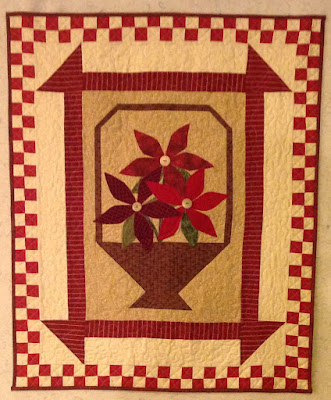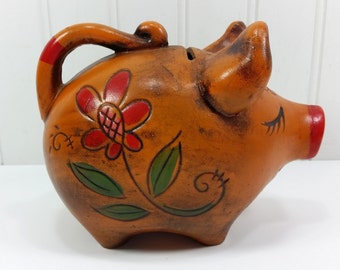Our 33rd and 34th Road Scholar
trips are now wonderful memories. We
drove 1,541 miles in all. We discovered
new sights, revisited familiar places, met interesting people, learned a lot,
and enjoyed good food. The weather was great.
What more could you ask from a vacation?

We have now been on nine Road Scholar programs on the Great Lakes. The previous seven are Cedarville, MI, on Lake Huron; Mackinac Island; South Bass Island (Lake Erie); Superior, WI; Sandstone, MN; Grand Marais, MN; and Isle Royale. We visited Bayfield briefly after the Superior RS. When I was very small our family spent a week each summer in Door County (Ephraim). I’ve only been back twice as an adult, once with Stevens, once with friends. It was time for a return trip!

We left home Saturday, June 18. Destination: Wausau, Wisconsin. We saw the Leigh Yawkey Woodson Art Museum, the Yawkey House, the Marathon Co. Historical Society, the Monk Botanical Garden, and the dells of the Eau Claire River (a county park).
Sunday, June 19: Phillips, WI, has the Smith Concrete Park. We drove past . . . then we turned around to take a look. Fred Smith created folk art out of concrete and glass. What a treat!

We arrived in
Bayfield about 2 p.m. The program was
based at the Bayfield Inn, right on the harbor. The rooms were comfortable and
the food was excellent. Road Scholar
was the only group at the Inn all week.
Participants came from as close as Kenosha, others from suburban
Chicago, and as far as California.
The theme of the program was the history of the Apostle
Islands and Bayfield. Presenters were
local historians and area experts.
 |
| Solstice sunrise over Basswood Island |
The area was settled by Native Americans guided by the
Great Spirit to migrate from the St. Lawrence valley. The Ojibwe defeated the Dakota and the
Iroquois and solidified their control of the south coast of Lake Superior, just
in time for the arrival of the fur traders.
That was a lucrative for the Ojibwe, the French, and the English.
Why “Apostle” Islands?
Because there are so many. None is
named for any of the apostles. Madeline
Island is the in the archipelago but not in the national park. That is the Christian name taken by the
Ojibwe wife of trader Michel Cadotte. (The town was chartered in 1856 and named for
Adm. Henry Bayfield, the British Navy surveyor stationed there.)

Field trips took us to the Apostle Islands National Park visitors’ center, housed in the old courthouse. The chief ranger told us about the geology of the islands, including the sea caves (summer) and the ice caves (winter). There are 175,000 summer visitors, on average. In the winter of 2014 the ice cover was so extensive and lasted so long that 135,000 visitors came from January 1-March 17. In 2015 there were 28,000 visitors between February 28 and March 9. However, the long-term trend is warming. Fishermen have to set their nets farther out to get coldwater fish and zebra mussels (an invasive species that prefers warmer water) have been found.
We saw the sea caves for ourselves on a boat cruise around the islands.
Coast Guardsmen stationed at Bayfield showed us their
equipment and described their duties, primarily safety inspections but also
rescues. A tour of the Bayfield
Maritime Museum provided a glimpse into the past: fisheries, lighthouses, and
shipwrecks.
 |
| Bayfield from the ferry |
We spent all day Wednesday on Madeline Island. It is the size of Manhattan but has far fewer
people – 300 in the winter, 2500 in the summer.
It’s been a summer resort since the 1890’s. Both a state park and a county park ensure
open lands.
Our bus went past Madeline
Island School of the Arts, which hosts quilting courses every summer. I'm seriously thinking about it.

The Road Scholar program ended Thursday morning. (Happy birthday to me!) Stevens and I checked out of the Inn, drove
25 miles to Ashland, and checked in to the Ashland Super 8. (The Inn was fully booked, but would have cost
$199/night. The Super 8 was just $65.) We had lunch with John and Ann who were the
group leaders of the Isle Royale Road Scholar program that we enjoyed in 2012. They
live outside Ashland, though they’d been on Isle Royale with a RS group just
the week before. That evening we heard
“Belfast to Blue Grass” at Big Top Chautauqua.
Big Top is a cultural institution in the region, providing concerts all
summer long under a real canvas tent. The
ensemble cast performed Irish and American folk music – a wonderful program!


We saw most of the 15 murals depicting Ashland’s history (earning it the title of “mural capital of Wisconsin”). The town was founded in 1856. The Soo Line railway delivered iron ore to the docks to be loaded on freighters destined for Chicago, Detroit, and Cleveland. (Sandstone quarried in nearby Washburn was shipped to the east and midwest and used in thousands of buildings and homes.)
 |
| Lake in the Clouds, Porcupine Mtns. State Park |
We headed northeast along the lake shore to Ontonagon in
Michigan’s Upper Peninsula. I chose it because we’d never been there and
because it’s the largest town adjacent to the Porcupine Mountains. We stayed at
a small family-owned resort with a nice stretch of sandy beach. Ontonagon is the western-most municipality in
the Eastern Time Zone – at this time of year the sun doesn’t set until nearly
10 p.m. It was founded in 1843 as the
market town for the area lumber industry at a time when the white pine forest
seemed inexhaustible. Nowadays the economy
relies on tourism. A shipbuilder
operated for several decades and apparently a federal subcontractor is making
something in the facility (but no one could say precisely what). The paper-bag
manufacturing plant closed in 2010. We visited the historical society and
toured the Ontanogon light house on Saturday morning. That afternoon we went to
the Porcupine Mountains State Park. (We
saw more of it than we intended because I turned the wrong way when we left the
visitors’ center.)
 |
| Ontanogon Lighthouse |
 |
| The northern terminus of US 45 (which runs just west of home) |
 |
| Morning mist, south of Ontanogon |
It was a long drive from Ontanogon to Door County: south, then east, then north. We left early
Sunday morning and arrived at Rowleys Bay Resort in Ellison Bay mid-afternoon.
There were 11 in our group for “The Door County
Experience.” It ran concurrently with “Door
County Cooking, Cuisine, and Culinary Arts.”
We had separate group leaders, but we ate most of our meals together and
shared two of the evening programs. It
was fun to swap stories of our days’ activities.

For our group:
·
Artist Ed Fenendael showed us how to paint
watercolors. We each made a 4 x 6 piece to take home. (And I bought the
painting he created as the class sample.)
·
Taxidermist Mike Orthober was wonderful! None of us knew much about taxidermy. Mike
showed how he creates the plastic molds over which he stretches the skin –
whether it’s a snake, a bird, or a deer.
We are better informed and much more appreciative.
·
Orchardists Mary Pat and Mark Carlson told us
about small-scale cherry orchard farming.
·
Field trips to Eagle Bluff state park and light
house, Peninsula State Park, Seaquist Orchards (a huge commercial operation), the
Door County Museum, and the Door County Maritime Museum.
 |
| Niagara escarpment, Eagle Bluff S.P. |
 |
| Fossil-hunting on the beach |
 |
| Eagle Bluff light house |
 ·
·
Door County fish boils are a traditional way to
serve white fish with onions and potatoes. The process is very dramatic.
·
Wednesday afternoon and evening were free
time. We caught the 11:45 ferry to
Washington Island, had lunch, and drove along tree-lined roads speculating about
the lakefront houses at the ends of all the driveways. We went past Sievers School of Fiber Arts
where quilting classes are taught. (Maybe I’ll need to register for classes at
both Madeline Island and Sievers, just to compare. J) That evening we joined another couple and
went to the Peninsula Players, an 80-year-old summer stock theater, to see “Chapatti.”
It was an excellent play.
We checked out after breakfast on Friday and pulled into
our driveway at 1 p.m. Laundry done,
groceries restocked, souvenirs accounted for . . . and great memories of a delightful
trip.
P.S. Door County artwork, then and now. My parents bought the picture on the left circa 1955. The view of the church and harbor in Ephraim hasn't changed much. We watched Ed paint the Cana Island lighthouse (from a photograph).
 |
| Door County comestibles! |
 The AAUW branch board met Thursday evening for a potluck and the summer planning meeting. We finished business just as Chelsea began her introduction. I could not have gotten home in time so I was grateful that our hostess happily welcomed us to join her in watching Hillary's acceptance speech. AAUW "advances equity for women and girls, empowering them to reach their highest promise." Being nominated for POTUS is just that!
The AAUW branch board met Thursday evening for a potluck and the summer planning meeting. We finished business just as Chelsea began her introduction. I could not have gotten home in time so I was grateful that our hostess happily welcomed us to join her in watching Hillary's acceptance speech. AAUW "advances equity for women and girls, empowering them to reach their highest promise." Being nominated for POTUS is just that! 































































